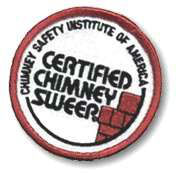URGENT!
Due to the weather, we are experiencing intermittent power outage and loss of internet. Please expect delays and or rescheduling of appointments during this time. We will reach out to you as soon as we can. Stay warm and stay safe!
We’ve all heard a spooky story that starts, “It was a dark and stormy night…” That sentence often starts scary stories because darkness can be…well…scary. Darkness creates hazards that we aren’t ready for.
 To combat the dark, we have created a lot of things that provide us light – even in dark places. Walk into a dark room, flip a switch, and suddenly you can see everything. Even, the average neighborhood provides pedestrians enough light to take walks at night along well-lit sidewalks and streets. Light is everywhere and it provides us safety.
To combat the dark, we have created a lot of things that provide us light – even in dark places. Walk into a dark room, flip a switch, and suddenly you can see everything. Even, the average neighborhood provides pedestrians enough light to take walks at night along well-lit sidewalks and streets. Light is everywhere and it provides us safety.
But what happens when the light goes out? Lords Chimney knows that electricity isn’t always a guarantee. Power outages can happen suddenly and without warning, and when they do we find ourselves plunged into a dark world…and that dark and stormy night goes from a scary story to a scary and dangerous situation.
Knowing what to do when the lights go out is important for maintaining the safety of your home and the people living in it. That’s why Lords Chimney wants to provide you with some tips and tricks to staying safe when the power goes out. And if you need chimney sweep and fireplace repair services, don’t hesitate to count on us.
Let’s face it – we all leave things lying around the house sometimes…and when the lights go out those things can be disastrous. It’s hard enough not to step on your kid’s jagged LEGO bricks when you can see. Remove the lights and your floors become a minefield of clothing, toys, your latest online purchase, books, pet beds, throw pillows, and whatever else can trip you up.
Simply put, seemingly innocuous things in the light suddenly become hazards waiting to take your feet out from under you and send you into a wall when it’s dark.
Not all light requires power that comes from the electric grid, however! Quickly get light into your hands and into your living spaces. Lighting a fire in your fireplace or wood stove provides light to your whole living space. It also has the added benefit of providing a little warmth on those chillier southeastern Texas nights.
In addition to a fire, get battery operated flashlights into the hands of anyone who needs to be walking around your home. Even a candle can provide some light in a pinch!
Lords Chimney has a team of technicians that will help you maintain your fireplace, wood stove, and chimney system, so that it’s always ready for such a time as this. Having your system ready to go has so many advantages (even when there are no issues with power to your home), but when the power goes out, the light, warmth, comfort, and safety a fireplace provides makes it one of the most important tools in your belt.
Establishing communication with anyone you can will help you as you navigate what steps you are going to take during the power outage. Talking to your neighbors will help you figure out whether your home is the only one experiencing the problem or if the issue is community wide.
Using your charged up cellular service can provide you with access to outside sources that can help forecast the extent of the problem and even how long it might last. In extreme cases, having access to a radio can allow you to continue to communicate with people, pool resources and information, and give and receive help when needs arise.
The best way to make sure you take the right steps after a power outage is to make sure you are ready before the power outage takes place. While it doesn’t happen often, it isn’t abnormal for the power to go out at times. Having a few things ready for such an occasion will only offer benefits. Here’s what we suggest always having on-hand:
 Flashlights & Batteries: As mentioned earlier, flashlights or battery-powered lanterns are essential for providing light during a power outage. Ensure you have enough batteries to keep these devices operational.
Flashlights & Batteries: As mentioned earlier, flashlights or battery-powered lanterns are essential for providing light during a power outage. Ensure you have enough batteries to keep these devices operational.Equipped with these things and a ready to use fireplace or wood stove will put you in a great position to wait out the next power outage that comes your way.
At Lords Chimney, our team of experts can help you with any of your home heating appliance needs – from installing a new fireplace or wood stove to cleaning and maintaining your chimney systems. Call us today and allow us to help you make sure your home is ready to provide you with all the light and warmth you will need to make that dark and stormy night not so dark and not so scary. You can also reach out to us online!
At Lords Chimney, we hold and maintain CSIA certifications because they help us better serve you! The Chimney Safety Institute of America is a non-profit organization striving to educate sweeps and serve the public. We are proud to associate with them with every passing year.
Check out some reasons why we and countless other chimney companies throughout the country trust the CSIA!
 One reason we take such pride in holding CSIA credentials is due to their strict code of ethics. The founders of the CSIA feel it’s important to ensure homeowners can trust their sweeps to act professionally and be honest. In order for a sweep to complete their CSIA training, they must agree to use what they’ve learned to bring fair and helpful services to the areas that they serve.
One reason we take such pride in holding CSIA credentials is due to their strict code of ethics. The founders of the CSIA feel it’s important to ensure homeowners can trust their sweeps to act professionally and be honest. In order for a sweep to complete their CSIA training, they must agree to use what they’ve learned to bring fair and helpful services to the areas that they serve.
The CSIA also wants homeowners to hold their sweeps accountable! If you hired a certified sweep, but feel that they are either lying about their certifications or that they aren’t living up to CSIA standards, report the sweep to the organization right away. Thanks to the CSIA’s commitment to the public, they’ll ensure corrective action is taken, so that you don’t have to face these issues again down the line.
Another great aspect of the CSIA is it’s desire to promote education and fire safety in homes everywhere. It’s not just about keeping sweeps informed and up-to-date on fireplace knowledge… they want homeowners to be aware of these facts, too! The more a person knows about their fireplace, the less likely they are to experience a big disaster, such as a fire or gas leak. And the CSIA aims to avoid accidents like these at all costs.
Knowing more about your fireplace and chimney will also ensure that you don’t get scammed down the road. If you hired a sweep, and things just don’t seem to be adding up, the CSIA wants to make sure you’re not paying more services you may not need. By staying informed, you’ll be able to spot a scam artist from a mile away!
The CSIA is also known for their longevity. This is an organization that has truly stood the test of time, and they continue being successful with every year that passes. They continuously search for ways to improve. In addition, they never fail to provide techs with new technology and techniques for better serving the public.
Since 1983, the CSIA has maintained its ethical standpoints and mission to keep homes throughout the country safer. When it comes to fireplace maintenance, they really know their stuff! And there’s a reason why they haven’t lost momentum in all these years. They never fail to receive support, and they are publicly promoted in various forms of popular media on a regular basis. When you hire a CSIA certified, you can bet that you’re in good hands!
Whether it’s a musty or moldy smell, a soft drip-drip sound coming from the chimney, or a puddle of water at the bottom of the firebox, a leaky chimney is a problem that cannot be ignored. Left unrepaired, even minor chimney leaks can create major damage throughout your fireplace system.
Thankfully, leaky chimneys don’t have to be a chronic problem. Identifying the source of the water entry and fixing your leaky chimney as soon as possible can prevent serious water damage to your fireplace system or home.
Chimneys are built to stand strong against the elements; however, there are still a number of points where water can work its way into the chimney system. The following are some of the most common causes of chimney leaks.
Chimney cap: The chimney cap protects the top of the chimney and keeps moisture, animals, and debris from falling into the chimney. A damaged chimney cap can allow water into the flue, causing damage throughout the fireplace and chimney structure.
Chimney crown: Often confused with the chimney cap, the chimney crown is a mortar slab that seals the top of the chimney. Chimney crowns should have small overhangs as well as be built with slightly sloped edges to prevent water from pooling on the top. Chimney crowns can deteriorate over time due to prolonged exposure to the elements; this creates cracks that allow moisture into the chimney.
Flashing: Flashing is the watertight metal strips that seals the joint between the chimney and the roof. Over time, flashing can lose its seal due to overexposure to the elements; flashing can also be damaged by storms or animals.
Masonry damage: Without regular maintenance, bricks and mortar can begin to deteriorate over time. The freeze thaw process – which causes water in bricks to freeze and expand – is the most common cause of water damage to masonry.
When it comes to fixing a leaky chimney, the most important step is to find and repair the cause of the chimney leak. Repairing the water damage without first removing the cause of the chimney leak will only lead to recurrent water problems. By uncovering the root cause of the chimney leak, you can rest assured that the water damage will not return once the necessary repairs have been made.
For chimneys with damaged masonry, tuckpointing may be used to repair or replace damaged bricks and mortar. During the tuckpointing process, small areas of damaged masonry are carefully removed before the new bricks and mortar are put in; this can help strengthen the chimney structure and help avoid the costs of rebuilding the entire chimney.
Another great way to prevent chimney leaks and water damage is by having your chimney waterproofed. Professionally waterproofing a chimney can seal and protect the masonry from water damage while still allowing the bricks to retain their semi-porous nature.
If you have a leaky chimney, trust the experts at Lords Chimney to repair it. Contact us today to schedule an appointment so we can help resolve your chimney leaks!
Every time you burn wood in your fireplace or wood stove, condensation forms on your chimney’s flue. That condensation forms a dark, tar-like, highly combustible substance called creosote. When creosote builds up in your chimney, it can lead to a damaging and dangerous chimney fire, or it can force carbon dioxide back into your home, endangering your family.
Creosote sweeping logs promise a solution. They claim to reduce creosote buildup in your chimney simply by burning them in your chimney. Some such logs carry the seal of approval of the Chimney Safety Institute of America (CSIA), but even the CSIA acknowledges that the logs are not a replacement for your annual chimney sweeping and inspection by a CSIA-certified chimney sweep.
Creosote sweeping logs work by sending chemicals up your chimney that react with the creosote, causing it to flake away and fall back down your chimney to your firebox, where it either burns up or can be swept away. At best, the logs only remove up to 60 percent of the creosote from you chimney over a 15-day period. That means that creosote still can build up to dangerous levels within your chimney, blocking smoke from leaving your chimney and potentially igniting a chimney fire.
Additionally, many fireplaces aren’t a straight vertical channel. That means creosote can fall to and gather on your chimney’s horizontal surfaces, where it can build up. If your chimney is a straight vertical line, the creosote that falls into the firebox can cause flare ups that can harm your hearth or someone standing near it.
Your annual chimney sweeping is more than just a cleaning. Your certified chimney sweep also inspects your chimney for structural damage, water leaks, crumbling mortar, and other problems. A creosote sweeping log simply can’t help you identify and solve problems with your chimney. Missing your annual chimney inspection gives small problems, like a minor leak, time to grow into a major problem that potentially will be expensive to repair.
More importantly, your certified chimney sweep looks for problems that could lead to a chimney fire or carbon monoxide poisoning. That includes animals that have nested in your chimney or chimney fires that have gone undetected.
While the CSIA recognizes that creosote sweeping logs can be a valuable piece of chimney maintenance, eliminating some creosote in between professional chimney sweepings, replacing your annual chimney sweeping and inspection with a creosote sweeping log is dangerous both for your home and your family. If you’re overdue for your annual chimney sweeping and inspection, call the CSIA-certified chimney sweeps at Lords Chimney. We’ll make sure that your chimney is creosote-free and ready to burn safely this winter.
When it comes to fireplace and chimney service, installation, and maintenance, finding the right company to work with can be hard to do. With so many businesses to choose from, it can be difficult to determine the seasoned professionals from the seasonal workers.
Although anyone with a brush and a truck might be able to call themselves a chimney sweep, few have earned the Chimney Safety Institute of America, or CSIA, certification. By hiring a certified chimney sweep, you can feel confident that you are working with a highly trained and educated professional.
Many homeowners mistakenly believe that all chimney sweeps are created equally. Unfortunately, there are few regulations or restrictions on the industry. Because of this, any handyman with a couple of brushes can call themselves a chimney sweep. Oftentimes, these “chimney sweeps” do little more than push around the ash and soot in your chimney, making more of a mess than actually cleaning the chimney.
In order to get the best service possible for your fireplace and chimney system, it is important to work with a CSIA certified chimney sweep. The CSIA certification is recognized as the gold standard in the industry. Chimney sweeps that hold a CSIA certification have completed extensive education, training, and testing and represent the best in the industry in terms of skill and professionalism.
CSIA certified chimney sweeps must also stay up to date on current industry practices. Because they must retest every three years in order to maintain their certification, CSIA-certified sweeps have information on the most recent safety and technology developments and best practices in the industry.
Because chimney maintenance can directly impact the safety of you and your family, it is important to work with a professional that you trust. Before hiring a chimney sweep, consider asking them the following questions:
Don’t trust your family’s safety to the cheapest company you can find. Instead, hire a CSIA certified chimney sweep to ensure that your chimney’s maintenance and repairs are done correctly – the first time. In the Houston area, contact Lords Chimney to schedule an appointment with our CSIA certified chimney sweeps!